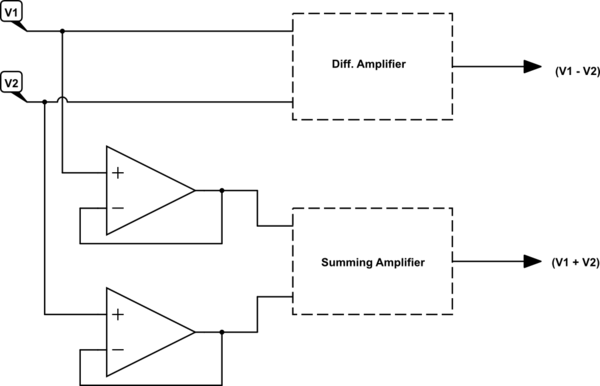I have two signals, one is a baseline voltage (V1) and the other is a 'difference' voltage (V2). From these I want to produce two signals, V1 + V2 and V1 - V2. The circuit I currently have is:

simulate this circuit – Schematic created using CircuitLab
Where R is the same everywhere.
Based on the diagrams found here:
http://www.electronics-tutorials.ws/category/opamp
Using This Op-Amp
I have a feeling something about this is wrong, and I can't just drive both a summing and differential amplifier in parallel. If so, can someone give me advice on how to get both of these voltage values with just the two inputs?


